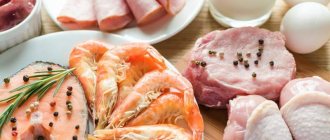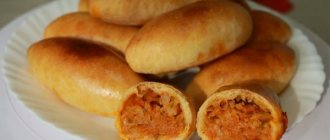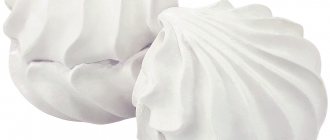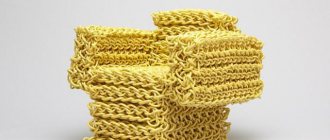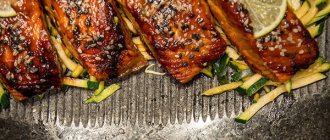Is it possible to eat cheeses while on a diet?
I will answer right away: it is possible and necessary.
Cheese is a very healthy, easily digestible product. It contains a lot of magnesium, iodine, iron, phosphorus, protein, zinc, calcium. Vitamins of groups A, E, F, D, PP, C, B and many other useful components. Nutritionists have long developed the well-known cheese diet, where the fat content should be no more than 35%. This is when the diet is based mainly on different types of cheese. This diet always gives good results, helps to lose weight, and the person does not feel hungry.
https://www.youtube.com/watch?v=izscloWnR3M
Because cheese, even low-fat, is quite a filling product. The main thing is to choose it correctly and consume it in reasonable quantities if you are thinking of going on a diet due to ill health, adhere to a healthy lifestyle, want to lose those annoying extra pounds, etc.
Decide right away whether you can eat cheese or whether it’s better to abstain from it. Consult your family doctor.
During the diet you can eat:
- Tofu cheese - it has the lowest fat content, only 4%. It can be eaten daily, it:
- strengthens the human skeleton;
- has unique healing properties;
- significantly reduces bad cholesterol in the blood;
- Grain cottage cheese can be consumed, but the fat content should be no more than 5%.
- Gaudette cheese is a new low-fat type of cheese 6%.
- You can buy Oltermani, Chechil, Ricotta, fitness cheese, only light.
Low-fat cheeses are a godsend for the diet. In addition, milk fats are healthy and easily absorbed by the body.
What it is
Ricotta is a traditional soft cheese that came to us from Italy.
Its name means “re-cooked” and perfectly illustrates the technology for preparing the product.
It is made from whey, which remains after other cheeses, for example, the no less famous mozzarella.
The whey is first quickly heated to 80 degrees, and then slowly brought to 90 degrees. One hour is enough for it to completely collapse at this temperature.
Depending on the type of soft cheese, heavy cream may be added during preheating, so the fat content of the final product ranges from 8 to 24%.
The curdled liquid was traditionally poured into baskets made of willow twigs, which allowed excess moisture to gradually escape. Now small plastic containers are used on an industrial scale.
This Italian delicacy has a soft, sweet taste and creamy curd consistency.
Types of low-fat cheeses that you can buy in the store
Today you can find a huge number of different varieties of cheese on sale. They are produced using different technologies from goat, cow, horse, camel and sheep milk. Thanks to this, they have different tastes and smells. You need to be able to choose the right fermented milk product suitable for your diet.
Solid
If you decide to lose weight, use solid low-fat varieties of fermented milk product for your diet. Most of them have high energy value, but in small quantities they do not contribute to the accumulation of fat deposits. Hard cheeses contain lecithin, which accelerates lipid metabolism, promotes the breakdown of fats and lowers cholesterol levels. On a diet you can eat the following varieties:
- Russian. It has the shape of a cylinder, yellow color, slightly sweetish creamy taste. By consistency it belongs to semi-solid low-fat varieties. Its calorie content is about 360 kcal/100 g, fat content is 50%. Often used for preparing snacks, pizza, roasting meat, fish, vegetables, etc.
- Swiss. It has the shape of a low cylinder, white or light yellow color, a pronounced aroma and a sweetish, slightly spicy taste. In the thickness of Swiss cheese there are oval or round eyes. The fat content of the product is 45%, calorie content is 380 kcal/100 g. This variety is often used for preparing soups, batters, casseroles, pies, and sandwiches.
- Parmesan is a low-fat diet cheese with a brittle, crumbly structure, a specific smell, delicate taste and a spicy aftertaste. It is consumed as an independent dish, added to soups, salads, and pizza. Parmesan is delicious paired with balsamic vinegar. Contains 32% fat, 292 kcal/100g.
- Cheddar (33% fat, 380 kcal/100g). It has a plastic consistency, yellowish color, nutty taste with a slight sour taste. It is considered beneficial due to the protein, calcium, phosphorus, amino acids, vitamins and minerals it contains. Low-fat Cheddar cheese is used to prepare toasts, salads, soups, sauces and fondues.
- Dutch. It has a milky taste with a slight sweetish or, conversely, sourish (depending on aging) taste, white or pale yellow color, dense structure with eyes of different shapes. Dutch low-fat cheeses go harmoniously with apples, grapes, and white wine. Fat content – 45%, kilocalories – 345/100 g. Can be consumed in small quantities during a diet.
- Gaudette. Semi-solid, low-fat, allowed during a diet. Contains 199 kcal/100 g and a lot of calcium, the proportion of fat is 7%. It has a mild piquant taste and is used for preparing appetizers, hot first and second courses.
Soft
Nutritionists also recommend using soft, low-fat cheese for your diet. The most popular varieties are:
- Oltermani (fat content 5-10%, 270 kcal/100 g). It has a milky taste and a sweet and sour aftertaste with a slight bitterness, a uniform texture with holes of almost the same size. Thanks to its delicate taste, minimal amount of salt and unobtrusive aroma, Oltermani is used for preparing sandwiches, salads, first and second courses, and fruit salads.
- Chechil is a fibrous, low-fat cheese variety suitable for diets. It is made in the form of threads collected in a bundle or tied with a rope, braid, or ball. Often sold smoked, it has a pungent flavor and is white or light yellow in color. Contains 5-10% fat, 253-313 kcal/100 g and a lot of salt. Used for making salads, pizza, pies.
- Fitness Viola Polar (5-10% fat, 250 kcal/100 g) is a low-fat fermented milk product that is popular among those on a diet. Often it contains yogurt instead of fat, making it even more beneficial for weight loss. It has a rich milky taste with the taste of additives that are often present in it: mushroom, chocolate, ham. Sandwiches and salads are prepared with Fitness Viola Polar.
- Low-fat Mozzarella cheese contains protein, phosphorus, calcium and fatty acids. Its fat content ranges from 17 to 24%, calorie content - 149-240 kcal/100 g. It is sold in the form of white balls in a salty solution and has a milky taste. Mozzarella is combined with pepper, basil, tomatoes, olive oil.
- Ricotta is a low-fat cheese made not from milk, but from whey without adding salt. Its fat content is 9-18%, calorie content is 174 kcal/100 g. The consistency of the product is loose with a sweetish aftertaste. Ricotta goes well with broccoli, fruit, salmon, basil, ham, and pasta.
- Feta. It is prepared from sheep's milk and has a fat content of 60% (290 kcal/100 g), but it can also be dietary, containing 30% fat, if goat's milk is used for its production. The second version of Greek cheese is suitable for diet. The color of Feta is white or cream, the texture is loose, the smell is curd. The taste depends on the variety and can be mild, creamy, salty or spicy. Combines with vegetables, herbs, vegetables, seasonings, and is often used to make salads.
- Tofu (1.5-4% fat, 73 kcal/100 g) – low-fat, made from soy milk. The consistency is similar to feta cheese, contains a lot of calcium and protein, which helps strengthen the spine and prevent osteoporosis. Salads and miso soup are prepared with Tofu; in itself it has a neutral taste, but perfectly complements the taste of other products in dishes.
- Adygei is a low-fat soft fermented milk product with a delicate texture and fermented milk taste. Contains 14% fat, 240 kcal/100 g. It contains no carbohydrates, so the product is recommended for use during a diet. Adyghe cheese is used as a filling for khachapuri.
- Curd cottage cheese (5% fat, 105 kcal/100 g) – a mixture of salty cream and curd grains. It has a delicate creamy texture, if its fat content does not exceed 5%, it can be consumed even during the most strict diet. It is often added to omelets, salads, and consumed as an independent dish.
- Light processed cheese is made from rennet cheeses and other dairy products using melting salts. 100 g of product contains 7.5% fat. Thanks to its creamy consistency, it is ideal for spreading on bread. It has a delicate creamy milky taste.
- Suluguni (24% fat, 285 kcal/100 g) is a classic Georgian fermented milk product. It has a slightly salty taste and a dense elastic consistency. Color – white or light yellow, can have many eyes, is used to prepare many dishes of Georgian cuisine.
Buying such cheeses in a store is not a problem now. They are, of course, difficult to find in regular grocery stores, but large supermarkets have them.
In low-fat Tofu, the fat content will range from 2-4%. It is high in protein and calcium and has healing properties. It is also called bean curd because it is made from soy milk.
This is curd cheese, the consistency and color of which resembles unsalted and low-fat feta cheese. Its taste is neutral, that is, almost absent. It goes on sale in vacuum packages in which the liquid is determined.
Differs in consistency and production method:
- solid;
- ordinary.
This cheese has many varieties, and is even made with additives: nuts, seasonings, pepper, etc.
Smoked tofu is popular, its types:
- Dense - has two varieties: Asian;
- west.
Rich in vegetable protein, contains all essential amino acids, a supplier of iron and calcium. Contains absolutely no cholesterol and is low in calories. It has spread all over the world.
Gaudette
The famous Dutch Gouda cheese now has a low-fat counterpart called Gaudette. This is the newest cheese from Scherdinger, containing only 8% fat (16% dry matter).
It has a classic soft-subtle cheese taste. It has a high calcium content and is easily and completely absorbed.
Chechil cheese has an interesting shape in the form of long threads of varying thickness. The taste is pronounced, sour milk. Fat - up to 11%.
The structure is slightly rough, layered, can be:
- braided into wreaths, or braids;
- curl up into ropes or balls.
Its varieties:
- in the usual smoked form;
- salty.
It has a wonderful milky taste and is produced:
- in plastic containers with a capacity of: 100 g, 200 g, 400 g;
- in the form of triangles;
- slicing
With fillings: ham, mushrooms, chocolate, just creamy, etc. They make salads and soups. To produce them, hard cheeses are taken, butter and other natural ingredients are added. Fat content - 5-10%.
See the calorie content of butter per 100 grams here.
Ricotta
Ricotta is an Italian delicacy dairy product. It is made from whey left over from the production of other cheeses. Different types of milk are used for whey. They can even use a mixture of milk, several types at once.
Its taste is slightly sweet, fat content:
- 9% from cow's milk;
- up to 25% from sheep's milk;
- 15% from goat's milk;
- 28% from buffalo milk.
Calorie content per 100 g - 120 kcal. Its sodium content is the lowest when compared to other cheeses. It contains an impressive composition of microelements and vitamins, especially a lot of calcium.
There is even methionine present - this is a sulfur-containing amino acid that protects the liver from adverse environmental factors.
Types of cheese:
- Ricotta Forte has excellent taste, lasts a long time, and is made only from sheep’s milk.
- Ricotta Fresca - only freshly prepared cheese is used; aging is not needed here.
- Ricotta Affumicata - made from a mixture of goat and cow's milk, there are also smoked types.
- Ricotta al Forno - prepared from a mixture of goat, buffalo, cow milk, and aged in ovens. It comes not only classic, but with different flavors: vanilla, lemon, chocolate, etc.
- Ricotta Romana - requires a lot of aging, the cheese is hard, salty taste.
Feta is a Greek semi-hard cheese made only from goat and sheep milk. Keep in a salt solution for at least 4 months. Fat content from 40 to 60%.
Benefits for women and men
Ricotta is based on simple proteins, albumins, which allow the cheese to be absorbed faster and also make hair strong and healthy. In addition, albumin helps cope with high blood pressure and strengthens the immune system.
Selenium contained in ricotta balances hormonal levels, helping women cope more easily with PMS and the onset of menopause. Omega acids reduce the level of bad cholesterol and keep the body youthful.
There is little salt in soft cheese, so it does not cause swelling and is allowed for hypertension and gastrointestinal diseases.
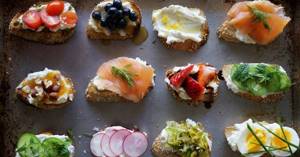
This product is also often used in home cosmetology - masks are made from it for hair and facial skin.
The amino acids and proteins that make up cheese help quickly increase muscle mass for those who regularly exercise and give energy even after the most exhausting workouts.
Note to parents: the high content of proteins, calcium and vitamin D in ricotta will allow children to grow faster and strengthen their bones, so try to give it to your kids more often.
Benefits for the elderly
This delicacy is very useful for older people. Vitamins A and B support vision that weakens with age, stimulate brain activity and strengthen memory.
Calcium and phosphorus reduce the risk of bone fractures, which are very dangerous at this age. This cheese improves well-being in case of arthrosis and arthritis.
List of low-fat cheeses
Low-fat cheeses are made from skim milk. That is, the cream is first skimmed from the milk, then the cheese is made.
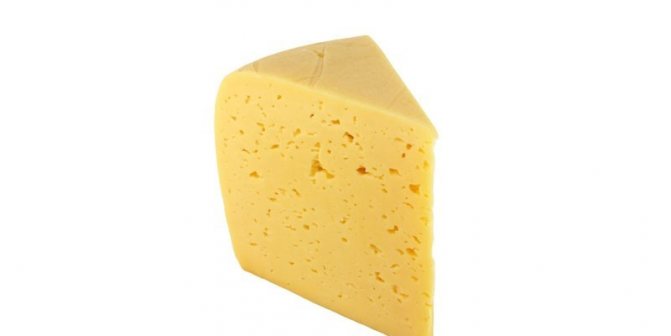
But it will be difficult to call it completely low-fat, because the percentage of fat content will still be present, but in different percentages:
- low-fat - fat content less than 15%;
- light - fat content 15-40%;
- normal - fat content 40-60%;
Low-fat cheese is almost as good as fatty varieties in terms of taste and beneficial properties. And in some respects it even surpasses them.
Here are some of them:
- The well-known soy cheese Tofu has a fat content of 2-4%;
- Granular cottage cheese contains no more than 5% fat content;
- Riccotta cheese has only 9%;
- Smoked Chechil cheese – fat content 10%;
- Mozzarella cheese contains no more than 15% fat;
- Viola Polar cheese has a fat content of 16%;
- Regular Chechil cheese contains 18% fat content;
- Feta cheese Arla Apetina has a fat content of no more than 20%;
- Cheese Arla Apetina Light -25%;
- Galbani Mozzarella Light cheese—fat content 30%;
- Salad cheese Favita – fat content 30%;
- Chevrefin cheese - fat content 40%;
- Kaserei Champignon cheese – fat content 15%;
- Gaudette cheese - its fat content is only 12%.
Hard cheeses
Hard cheeses are most widespread, these include: Romano, Emmental, Raclette, Grano Padano, Leiden, Gruyere, Parmesan, Pecorino, Maasdam, Frisien, etc. Hard cheeses contain lecithin, which affects the proper metabolism of fats.
Lecithin is part of the structure of cell membranes, is responsible for their permeability, normalizes cholesterol levels, and stimulates the work of enzymes to break down fats.
Cheese production is a long process. And ripening takes up to 3 months or more.
Cheese features:
- Swiss - 45% fat mass, matures in 5-6 months. It is cylindrical in shape and has small eyes in cross section. Sweetish taste, pleasant aftertaste. The most famous: Moscow, Altai, Swiss, Soviet.
- The Parmesan type is very famous and loved by everyone. Its structure is slightly crumbly and breaks easily. Ripens for at least six months. Its taste and aftertaste are refined and unforgettable for a long time.
- Dutch - small eyes when cut, color from bright yellow to dark yellow. Salty taste and delicate slightly sour aftertaste. Popular types: Kostroma, Dutch.
- Cheddar type - the head is round, slightly flattened on the sides. With a soft consistency, there are no eyes when cut. It has a salty taste, a little sugary.
- Russian - cylindrical in shape, pleasant consistency. Creamy, sweetish taste, very pleasant. The most revered is Russian.
- Smoked type - they have a well-defined smoked taste, a brown rind, and a yellow color when cut. Popular: Gouda, Gruyère, Cheddar.
Soft cheeses
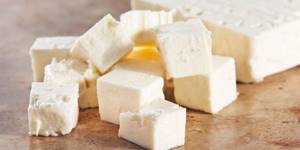
Soft cheeses have a pasty consistency and a milky or creamy taste.
It is produced from cow's milk and bacterial ferment, classified:
- with maturation;
- without ripening.
Most popular:
- Dorogobuzhsky - the crust is covered with mucus, transparent in color. It has a spicy-sharp taste, very pronounced, without eyes. Known types: Dorozhny, Dorogobuzhsky, Kalininsky.
- Like Camembert - a head of cheese is covered with white mold. Main type: Russian Camembert.
- Smolensky type - heads no more than 2 kg, mucus spots are clearly visible on the crust. There is no need to remove mucus before eating. Its representatives: Hunting, Snack.
The healthiest cheese is homemade. This is a good alternative to the store, because you can buy stale and low-quality products there. And at home you can always control the process.
Cheese Fitness Cheese Belarus composition. What are the benefits of Cheese “Fitness” 20% (Belarus)
- Vitamin A is responsible for normal development, reproductive function, skin and eye health, and maintaining immunity.
- Vitamin B2 is involved in redox reactions, helps to increase the color sensitivity of the visual analyzer and dark adaptation. Insufficient intake of vitamin B2 is accompanied by impaired condition of the skin, mucous membranes, and impaired light and twilight vision.
- Vitamin B12 plays an important role in the metabolism and transformation of amino acids. Folate and vitamin B12 are interconnected vitamins that are involved in hematopoiesis. A lack of vitamin B12 leads to the development of partial or secondary folate deficiency, as well as anemia, leukopenia, and thrombocytopenia.
- Vitamin PP is involved in redox reactions of energy metabolism. Insufficient vitamin intake is accompanied by disruption of the normal condition of the skin, gastrointestinal tract and nervous system.
- Calcium is the main component of our bones, acts as a regulator of the nervous system, and is involved in muscle contraction. Calcium deficiency leads to demineralization of the spine, pelvic bones and lower extremities, increasing the risk of developing osteoporosis.
- Magnesium is involved in energy metabolism, the synthesis of proteins, nucleic acids, has a stabilizing effect on membranes, and is necessary to maintain the homeostasis of calcium, potassium and sodium. A lack of magnesium leads to hypomagnesemia, an increased risk of developing hypertension and heart disease.
- Phosphorus takes part in many physiological processes, including energy metabolism, regulates acid-base balance, is part of phospholipids, nucleotides and nucleic acids, and is necessary for the mineralization of bones and teeth. Deficiency leads to anorexia, anemia, and rickets.
Lowest calorie cheese
After studying popular low-fat varieties of fermented milk products, it becomes obvious that Tofu is most suitable for diet and weight loss. It is the lowest in calories, resembles ordinary cottage cheese in color and texture, but does not contain any ingredients of animal origin. Tofu is a plant product made from soy milk through special processing. This low-fat cheese contains a lot of easily digestible protein, iron, calcium and is completely free of cholesterol.
What is it used for?
In cooking, ricotta can act as an independent dish. For example, here is my favorite option for a light lunch with this cheese - just add some cherry tomatoes, lettuce, olive oil to it - and a delicious dish is ready! It is ideal for summer or fasting days.
The delicacy can be quickly made into a snack - just spread it on toast and top it with fresh radishes, basil, cucumber or slices of salmon.

This delicacy is an important ingredient in many Italian dishes: it is impossible to imagine traditional Sicilian cannoli waffle rolls without it.
Ricotta can be regularly found in recipes for hot dishes - in lasagna, various stuffed vegetables.
Calorie content of low-fat cheeses
Cheese has been produced by man since ancient times; it has always been valued and loved.
Now we will find out the calorie content of the most common low-fat cheeses:
- Tofu cheese is rich in high-quality protein and can easily replace meat. Ideal for dietary nutrition. Calorie content: 100 grams contain 90 kcal.
- Ricotta cheese is made from whey. Contains the most valuable amino acid - methionine, rich in vitamin A, B, calcium. Calorie content - 160 kcal per 100 g.
- Mozzarella cheese is made only from skim milk. Cheese balls are kept in a salty solution. Calorie content - 150 kcal per 100 g.
- Grainy cottage cheese or cheese - it is prepared from low-fat milk with the addition of fresh cream. There are many options for its consumption. Calorie content - 130 kcal per 100 g.
- Chechil cheese is similar in consistency to Suluguni cheese. It is made in the form of a braid and soaked in a saline solution for ripening. It is also smoked. Calorie content - 310 kcal per 100 g.
- Cheeses Fitness, Valio, Grünlander, Polar - look for them in expensive supermarkets. Calorie content - 148 kcal per 100 g.
- Feta is a dietary product. Now you can find a replacement in stores: feta light. This cheese has a fat content from 6 to 15%. Calorie content - 150 kcal per 100 g.
- Cheeses Oltermanni, Arla, Valio, Natura - they have the taste of fresh milk. Calorie content - 250 kcal per 100 g.
- Suluguni is a Georgian pickled cheese with a calorie content of 285 kcal per 100 g.
In this list of cheeses, you can now easily find “your” cheese that will satisfy you in terms of usefulness, taste and price.
Mozzarella – 160-280 kcal, fat content – from 17 to 24%, proteins – 28 g
Italian mozzarella, purely formally, is in fourth place in our ranking. In fact, it shares the same position with feta, since its fat content can reach the same 24%. But if you try, you can find a more dietary product with 17% fat content.
What's good about mozzarella? This young, tender cheese goes well with almost all vegetables, herbs and even berries. Like any natural cheese, mozzarella is rich in phosphorus and calcium, contains easily digestible protein and healthy fatty acids. However, it is worth noting that mozzarella is not a source of beneficial lactic acid bacteria: milk for it is fermented using rennet enzymes, without additional microflora.
! Natural mozzarella has a very short shelf life - 5-7 days.
If the label indicates an expiration date of more than a week, preservatives have definitely been added to such mozzarella.
How to choose
Some low-fat cheeses suitable for diet can be prepared independently at home. If you decide to purchase a product in a store, be guided by the following criteria:
- Go to a trusted supermarket where the storage conditions for goods are observed.
- The optimal fat content should not exceed 30%. Sometimes manufacturers indicate lower numbers, then you should look at the calorie content. Often the indicator exceeds the allowable norm for following a diet.
- Study the color of low-fat varieties of fermented milk products. It should be white or light yellow due to its use in skim milk.
- Inspect the cuts and edges of the product, which should not be crumbling or cracked. The only exception is the Indiazabal variety.
- If possible, taste the product.
- Pay attention to the price. Low-fat fermented milk products are not cheap; low prices may indicate counterfeiting or the addition of vegetable fats.

